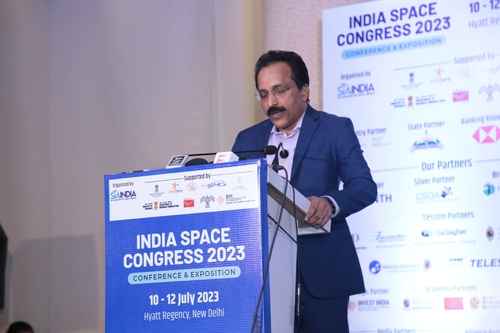New Delhi, July 10 : India is among nations with immense potential for expansion in the space industry, said S Somanath, Secretary, the Department of Space and Chairman, Indian Space Research Organisation (ISRO) here on Monday.
He was speaking at the two-day second edition of India Space Congress 2023, an annual flagship event organised by the SatCom Industry Association of India (SIA-India), held in the national capital.
“We proudly stand among the spacefaring nations with immense potential for further expansion. Our relentless pursuit of growth, innovation, and collaboration positions us on the list of frontrunners, ready to embrace new horizons and shape a future filled with endless possibilities,” Somanath said.
Amid growing demand for small satellites, Somanath also announced that ISRO will transfer its Small Satellite Launch Vehicle (SSLV) to the private sector later this year .
The SSLV has had two development flights. The launch vehicle will provide on-demand services to put satellites weighing up to 500 kg in a low-earth orbit.
“We have built our own SSLV which will be transferred to the industry and produced in large numbers to meet the growing demand,” Somanath said.
He added that the US President Joe Biden’s announcement of an Indian astronaut’s journey to the International Space Station in 2024, “marks a remarkable milestone in the pursuit of space exploration”.
It “symbolises the strength of international collaboration and the boundless potential of human curiosity,” said Alex Macdonald, Chief Economist at NASA.
“By fostering partnerships and embracing diversity, we propel humanity’s reach to new frontiers, uniting nations in the pursuit of scientific knowledge and inspiration,” he said.
The event brought together renowned industry leaders, esteemed dignitaries, and experts from the space sector to engage in insightful discussions and shape the future of space technology.
At the inaugural address, Haryana Governor Bandaru Dattatraya highlighted the significance of raising awareness about the benefits of space technology applications and data. He stressed the need to foster partnerships among industry, academia, and government agencies to drive the growth of the space sector.
By utilising satellite imagery and remote sensing data, crop planning, resource allocation, and disease detection have improved, leading to increased crop yield and enhanced productivity.
